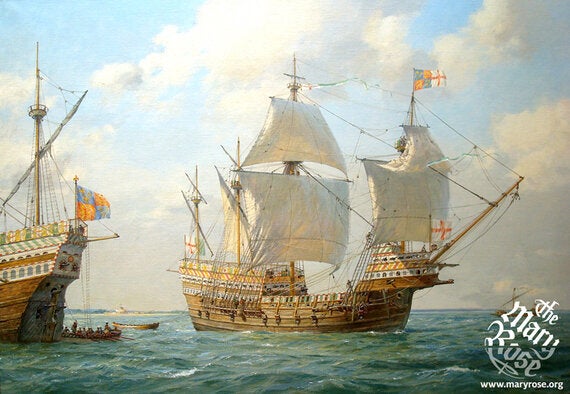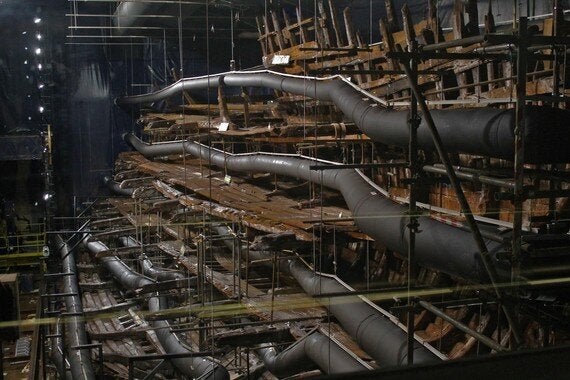The surviving section of the Mary Rose is as a Tudor-era time capsule; and as the ship passes into the next phase of her history, the museum and conservation team intend to keep her this way.
As we prepare for the upcoming reopening of the Mary Rose Museum, which is due to take place later this year at the Portsmouth Historic Dockyard, questions are asked once more about the missing 60% of the ship's structure.

The Mary Rose had only half a hull when raised from the Solent, between Portsmouth and the Isle of Wight, in 1982. When the ship sank she came to rest on the seabed on her starboard, or right-hand side. The side facing the surface, the port, or left hand side, was the most exposed, and as a result it was broken up by tidal action, and broken down by marine woodborers and human activity like dredging and anchorage. Further human damage was endured during marine excavations, such as those by the Deane brothers in the 1830s, who actually used detonating explosives during their salvage attempts!
Fortunately for us, the starboard side of the ship was buried by mud fairly rapidly, which kept it safe from the woodborers due to a lack of oxygen. This half remained basically undisturbed until 1982, when the Mary Rose was lifted, and our conservation team have been looking after it ever since.
A question that the museum often gets asked is if there are plans to rebuild the port side of the ship. The major argument seems to be "But then you'd have a whole ship!" While this would be technically true, would we really? At the moment there is a 100% genuine 16th century warship, each and every timber handcrafted by shipwrights who lived, worked and died in a Tudor world. Those timbers are unique, a living piece of history that allows archaeologists and historians to learn about shipbuilding's past. The moment you start adding new parts, you take something away from that.

The classically minded know the story of the Ship of Theseus, but perhaps a more familiar concept is that of 'Trigger's Broom'. Trigger, a character in the BBC sitcom "Only Fools and Horses", was rewarded for using the same broom for 20 years. When he later admitted to having replaced both the head and the handle several times - questions were asked. Had he been using the same broom, or did it become a new one with the first replacement? The same questioning can be applied to the Mary Rose; how much can you replace before a 16th century vessel becomes a 21st century replica?
In the museum we've tried to make it obvious when something has been replaced. Frosted acrylic has been used to replace all the missing metal blades on knives, saws and many other tools recovered from the seabed. This makes displaying the collection much easier, as not only does it show how the objects would have looked, but also shows how much was actually recovered. If you see a cannon on display anywhere else, it might be a replica, or on loan from another institution. In the Mary Rose Museum, everything that looks real IS real, and if it looks too good to be real, it's still real.
We value authenticity in the museum, and it's always nice, when visitors ask, "That's not real, is it?" to be able to say "Oh yes, everything is real". The Mary Rose may only be 40% of a ship, but she's 100% genuine.
